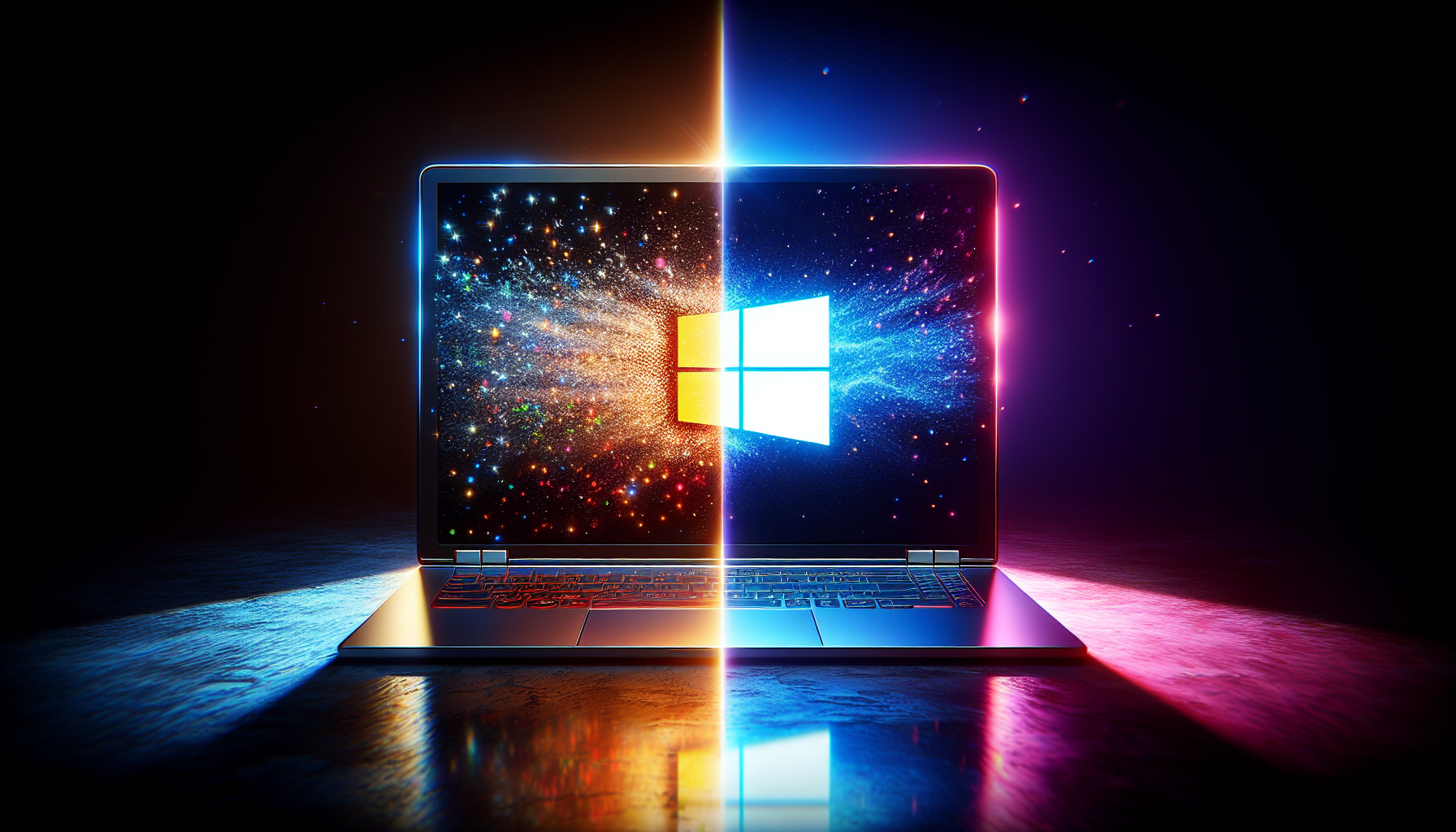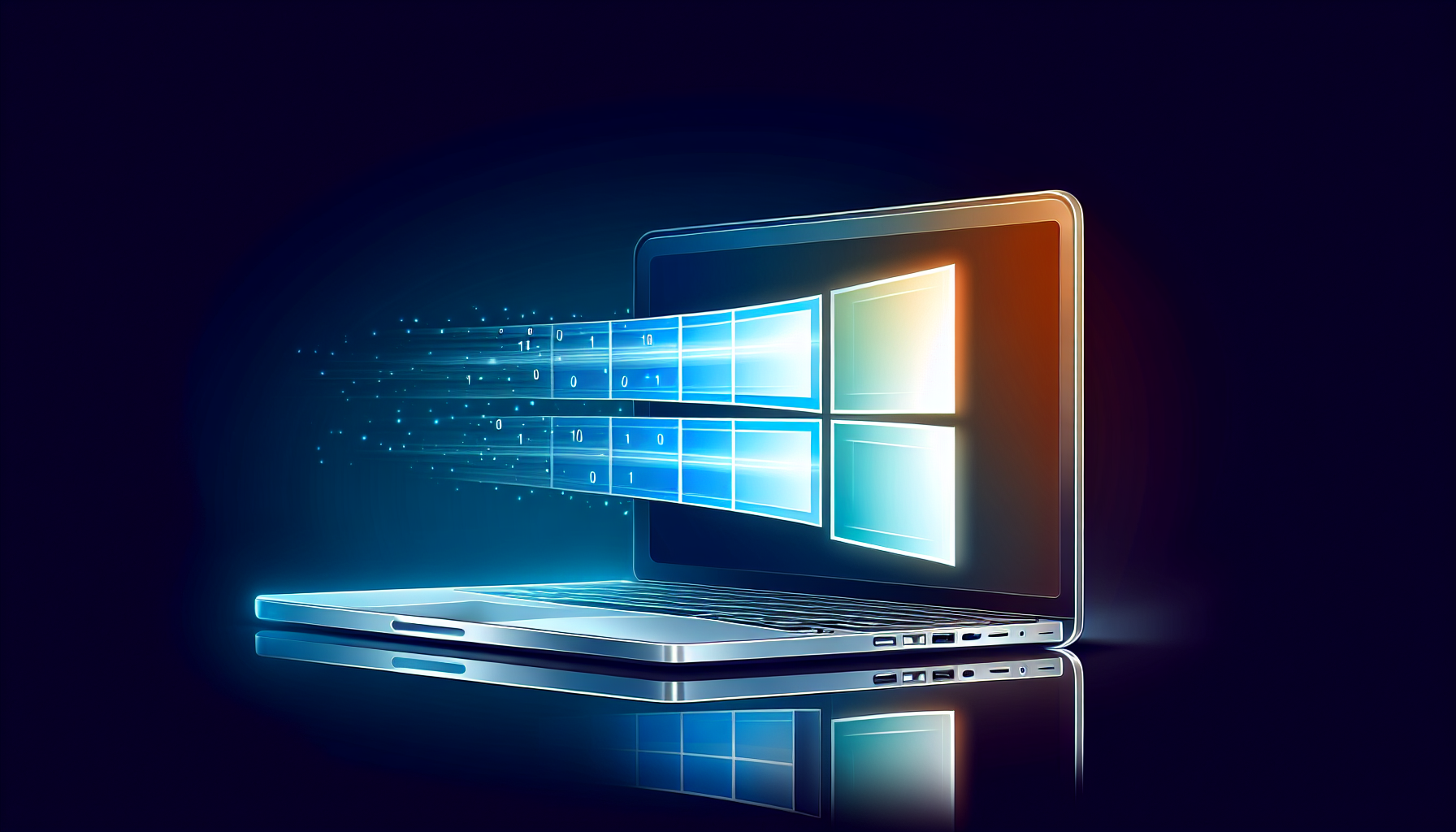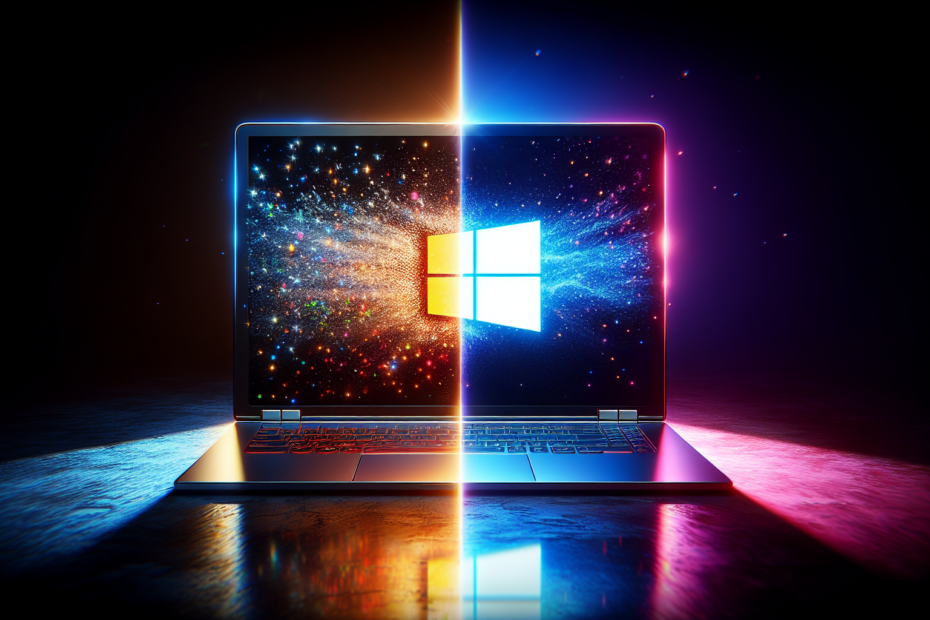






Are you in the market for a new laptop but feeling uncertain about whether to go for Windows 10 or the latest Windows 11? You’re not alone! With technology constantly evolving, it can be challenging to keep up with the latest updates and decide which operating system is best for your needs. In this article, we’ll explore the key differences between Windows 10 and 11, helping you make an informed decision and find the perfect laptop for your everyday use. So, get ready to embark on a journey where you’ll discover which Windows version will take your computing experience to the next level!
Benefits of Windows 10
Familiar Interface
One of the key benefits of Windows 10 is its familiar interface. If you have been using previous versions of Windows, transitioning to Windows 10 will be a seamless experience. The Start menu, taskbar, and desktop layout remain similar, making it easy for you to navigate through the operating system. Windows 10 also includes the virtual assistant, Cortana, which allows you to perform voice commands and search for information effortlessly.
Large Software Compatibility
Windows 10 boasts a large software compatibility, making it the preferred choice for many users. Whether you need productivity tools, design software, video editing programs, or gaming applications, you will find extensive availability and compatibility with Windows 10. This compatibility ensures that you can seamlessly run your favorite applications without any compatibility issues or the need for additional software.
Stability and Reliability
Windows 10 is known for its stability and reliability. Microsoft has made significant improvements in terms of performance and system stability compared to previous versions of Windows. With regular updates and bug fixes, Windows 10 ensures a smooth and reliable experience for its users. You can count on your operating system to perform reliably without any unexpected crashes or glitches.
Available Updates and Support
Another advantage of Windows 10 is the availability of frequent updates and support from Microsoft. These updates not only introduce new features and improvements but also address any security vulnerabilities. With Windows 10, you can rest assured that your operating system will stay up to date and protected against the latest threats. Microsoft also provides extensive documentation and online support to help you troubleshoot any issues that may arise.
Benefits of Windows 11
Fresh and Modern Interface
Windows 11 brings a fresh and modern interface to the table. With its centered Start menu, redesigned taskbar, and rounded corners, Windows 11 offers a sleek and visually appealing user interface. The overall design has been optimized for touchscreens and tablets, providing a more intuitive and interactive experience. If you appreciate a contemporary look and feel, Windows 11 will definitely catch your eye.
Enhanced Performance
Windows 11 is built with enhanced performance in mind. It introduces several optimizations that allow for faster boot times, improved app launching, and smoother overall performance. The operating system utilizes the latest technologies to make the most out of your hardware, resulting in quicker response times and increased productivity. These performance improvements contribute to a more efficient and enjoyable computing experience.
Improved Gaming Experience
For gamers, Windows 11 offers exciting advancements in terms of gaming experience. With features like Auto HDR, DirectStorage, and Direct X12 Ultimate, Windows 11 provides enhanced graphics, reduced loading times, and improved overall gameplay. The operating system prioritizes gaming performance and compatibility, ensuring that you can enjoy your favorite games at their full potential. Windows 11 brings a new level of excitement to gaming enthusiasts.
New Features and Enhancements
Windows 11 introduces a range of new features and enhancements that enhance productivity and user experience. From Snap layouts and Snap Groups for multitasking to a redesigned Microsoft Store with a wider selection of apps, Windows 11 offers a host of new functionalities. Other notable features include the integration of Microsoft Teams, a new widget system, and a revamped Microsoft Edge browser. These additions provide a fresh and innovative experience for users.

Compatibility
Hardware Requirements
When considering which operating system to choose, it is essential to take hardware requirements into account. Windows 10 has relatively modest hardware requirements, making it compatible with a wide range of devices. However, Windows 11 has more stringent requirements, particularly for the CPU and TPM (Trusted Platform Module) version. To enjoy all the features and benefits of Windows 11, you may need to ensure that your device meets the specified hardware requirements.
Software Compatibility
In terms of software compatibility, both Windows 10 and 11 offer extensive support for a wide variety of programs and applications. Windows 10, being the more established operating system, has a greater range of software compatibility due to its wide usage and time in the market. However, as Windows 11 gains traction, developers will likely focus on ensuring their software is compatible with both versions. It is advisable to check the compatibility of any essential software you rely on before making a decision.
App Availability
In terms of app availability, Windows 10 has a vast ecosystem of applications and software. Additionally, the Microsoft Store houses a range of apps and games for users to explore. While Windows 11 is relatively new, app developers are actively updating their software to be compatible with the new operating system. Moreover, the revamped Microsoft Store in Windows 11 aims to provide a better selection of apps and a more streamlined user experience. As time progresses, the availability and compatibility of apps on Windows 11 will continue to improve.
System Requirements
Minimum Requirements for Windows 10
To run Windows 10, here are the minimum requirements:
- Processor: 1 GHz or faster
- RAM: 1 GB (32-bit) or 2 GB (64-bit)
- Hard Disk Space: 16 GB (32-bit) or 20 GB (64-bit)
- Graphics Card: DirectX 9 or later with WDDM 1.0 driver
- Display: 800×600 resolution
It is important to note that these are the minimum requirements, and for optimal performance, it is recommended to have higher specifications.
Minimum Requirements for Windows 11
To run Windows 11, here are the minimum requirements:
- Processor: 1 GHz or faster with 2 or more cores on a compatible 64-bit processor
- RAM: 4 GB or more
- Hard Disk Space: 64 GB or more
- Graphics Card: DirectX 12 compatible graphics / WDDM 2.x
- Display: 720p resolution or higher, with a diagonal screen size of 9 inches or larger
Similar to Windows 10, these are the minimum requirements, and for the best experience, higher specifications are recommended.

User Interface
Windows 10 User Interface Overview
The user interface of Windows 10 is designed to provide a familiar and intuitive experience. The Start menu, located at the bottom left corner of the screen, allows you to access your apps, files, and settings. The taskbar, situated at the bottom of the screen, displays open apps and provides quick access to frequently used features like the search bar and system notifications. Windows 10 also has a customizable desktop where you can place shortcuts to your most-used applications and files.
Windows 11 User Interface Overview
Windows 11 introduces a fresh and modern user interface. The centered Start menu is now a prominent feature, providing quick access to your apps and documents. The taskbar has been redesigned and can be positioned at the center or bottom of the screen, according to your preference. Additionally, the rounded corners and new animations add a touch of elegance to the overall look. The user interface of Windows 11 is optimized for touchscreens and offers a more interactive experience.
Performance
Windows 10 Performance
Windows 10 is known for its good overall performance. It offers smooth multitasking capabilities, allowing you to run multiple applications simultaneously without significant slowdowns. With regular updates and optimizations, Windows 10 continually improves the performance of its interface and system functions. However, it is recommended to have adequate hardware specifications to fully leverage the performance capabilities of Windows 10.
Windows 11 Performance
Windows 11 aims to provide enhanced performance compared to its predecessor. The operating system focuses on optimizing system resource utilization, resulting in faster boot times, improved app responsiveness, and smoother multitasking. The performance improvements in Windows 11 are particularly beneficial for users who engage in resource-intensive tasks or require seamless workflows. However, to fully experience the performance enhancements, it is recommended to have a compatible device that meets the hardware requirements of Windows 11.
Gaming Experience
Windows 10 Gaming Experience
Windows 10 is a popular choice for gamers due to its extensive game library and compatibility with a wide range of gaming hardware. With features like Xbox integration, Game Mode, and DirectX 12, Windows 10 ensures an immersive gaming experience. It provides access to popular gaming platforms like Steam and Epic Games as well as a variety of gaming accessories and peripherals. Windows 10 allows gamers to customize their gaming experience and maximize their performance.
Windows 11 Gaming Experience
Windows 11 takes gaming to the next level with its focus on enhancing the gaming experience. With features like Auto HDR, which improves the color and contrast of games, and DirectStorage, which enables faster loading times, Windows 11 offers improved graphics and reduced game waiting times. Furthermore, the integration of Xbox Game Pass and the introduction of new features such as Direct X12 Ultimate create a seamless gaming environment. Windows 11 provides an exceptional gaming experience for casual and hardcore gamers alike.
Software Support
Windows 10 Support Lifecycle
Microsoft has committed to supporting Windows 10 until October 14, 2025. During this period, the operating system will receive regular updates and security patches to ensure stability and security. Microsoft also provides documentation and support to help users troubleshoot any issues they may encounter. However, it is important to note that after October 14, 2025, mainstream support for Windows 10 will end, and extended support will continue until October 13, 2026, with limited updates and assistance.
Windows 11 Support Lifecycle
Windows 11 has not yet reached its end of support lifecycle, as it is a relatively new operating system. Microsoft has committed to providing updates, bug fixes, and security patches for Windows 11 for a minimum of ten years from its release. This commitment ensures that users will receive ongoing support and enhancements for their operating system. With the support lifecycle of Windows 11, users can have peace of mind knowing that their system will remain up to date and secure.
Security
Windows 10 Security Features
Windows 10 offers a range of security features to protect your system and personal data. These features include Windows Defender Antivirus, which provides real-time protection against malware and other threats. Additionally, Windows 10 incorporates measures like Windows Hello, which enables secure biometric authentication with facial recognition or fingerprint scanning. With regular security updates and built-in security features, Windows 10 ensures a robust and secure computing environment.
Windows 11 Security Features
Windows 11 introduces several new security features to enhance the safety of your system and data. It includes Windows Hello improvements, such as Hello for Business, which enhances identity verification for enterprise users. Windows 11 also incorporates Secure Boot, which protects against unauthorized software and firmware. The operating system prioritizes security with a focus on protecting against modern threats and vulnerabilities. Windows 11 offers increased peace of mind, ensuring that your data remains secure.
Pricing and Upgrade Options
Cost of Windows 10
The cost of Windows 10 varies depending on the edition and licensing model you choose. Windows 10 Home typically costs around $139, while Windows 10 Pro is priced at approximately $199. However, it is important to note that these prices are subject to change, and promotional offers may be available from time to time. Additionally, some devices may come pre-installed with Windows 10, reducing the need for a separate purchase.
Cost of Windows 11
The cost of Windows 11 is expected to be similar to that of its predecessor, Windows 10. The pricing details for Windows 11 have not been officially announced at the time of writing, as it is a relatively new operating system. However, like Windows 10, Windows 11 may have different editions and licensing options, each with its own pricing structure. It is advisable to check with authorized retailers or the Microsoft website for the most up-to-date pricing information.
Upgrade Options
For users currently running Windows 10, Microsoft has announced that Windows 11 will be available as a free upgrade for eligible devices. The free upgrade will be available through the Windows Update service, allowing users to seamlessly transition to Windows 11 without additional cost. However, it is important to ensure that your device meets the hardware requirements for Windows 11 before initiating the upgrade process. Microsoft provides tools and resources to check the compatibility of your device and guide you through the upgrade process.



